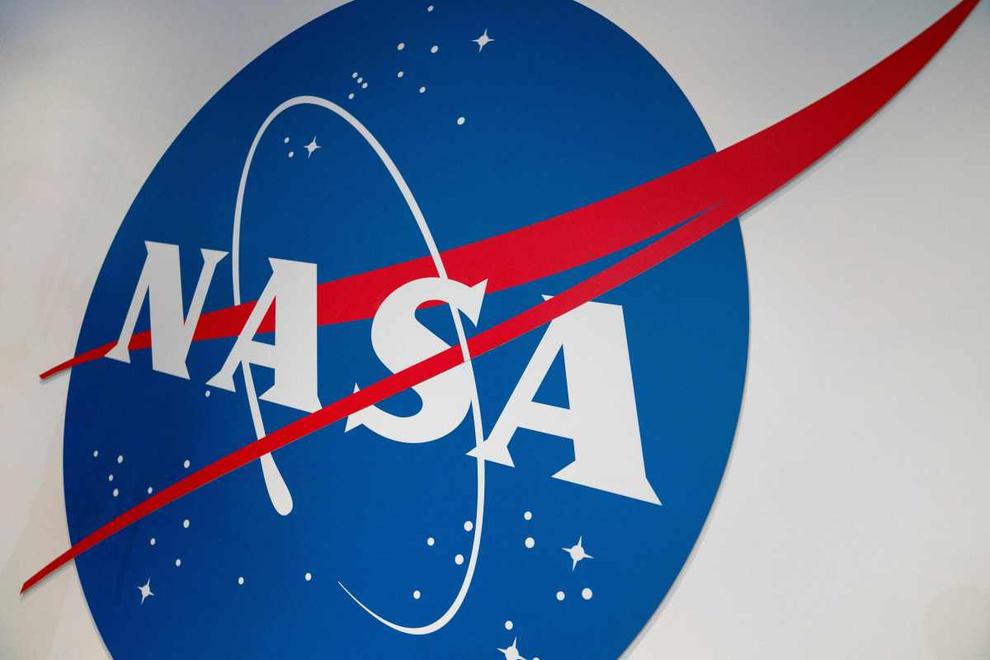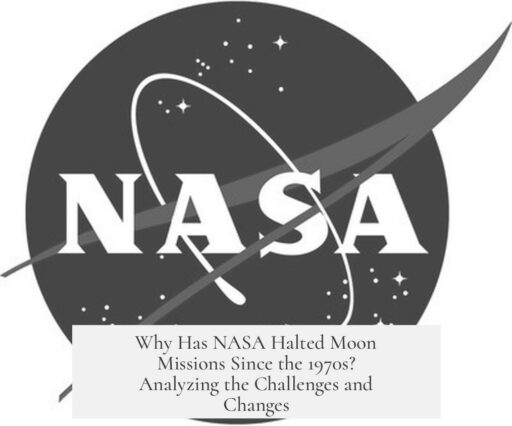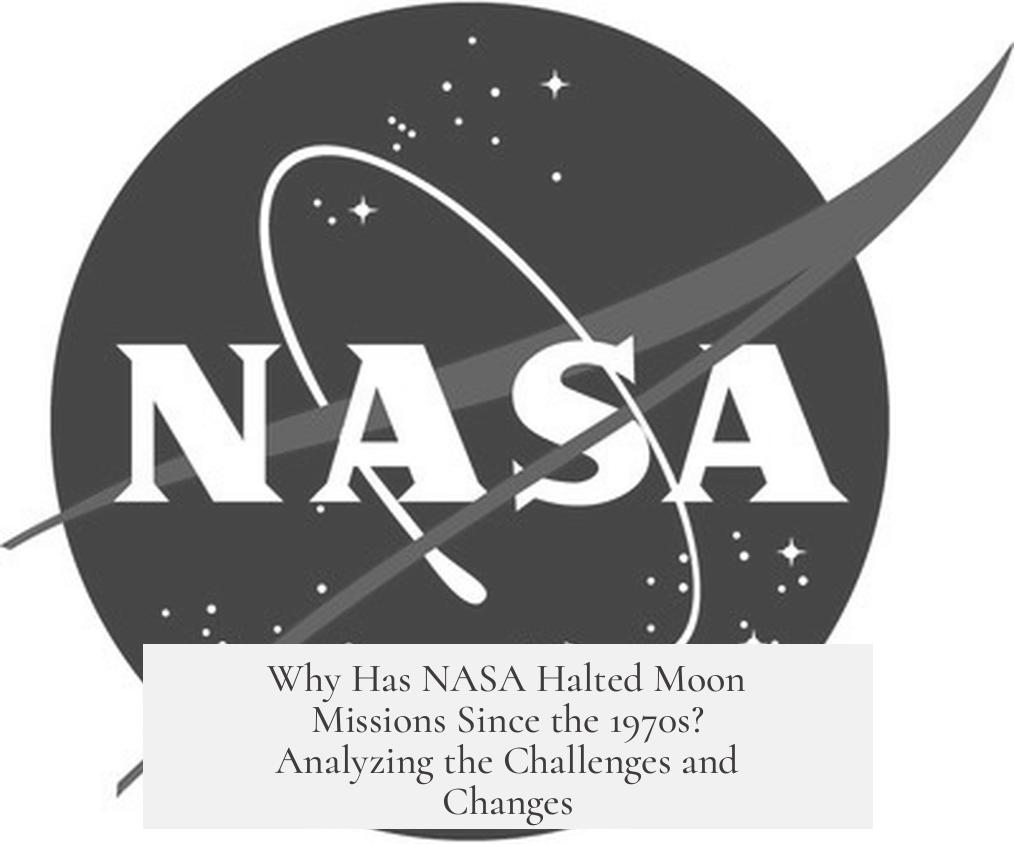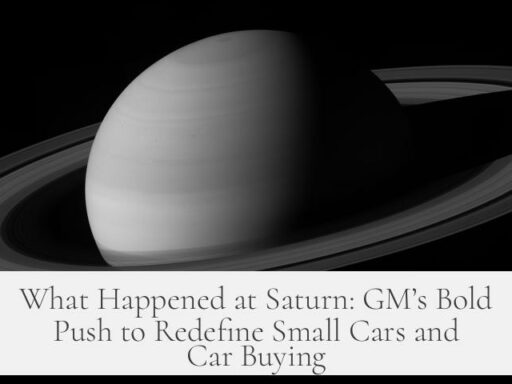NASA has not gone to the moon only once; it successfully landed astronauts on the lunar surface six times between 1969 and 1972. Multiple missions, Apollo 11 through Apollo 17 (excluding the aborted Apollo 13), achieved moon landings during this period. The question often arises why NASA ceased human moon landings after such apparent success.

NASA’s Apollo program marked a milestone in space exploration with six moon landings spanning less than four years. Apollo 11 first touched down in July 1969, followed by five more missions. Apollo 13 is famously known as a “successful failure” due to its aborted lunar landing but safe astronaut return.
The decision to stop moon missions after Apollo 17 relates to several interconnected factors. First, the political and public will to continue such expensive missions sharply declined in the early 1970s. The original impetus for Apollo was the Cold War space race with the Soviet Union. Once the US secured lunar victory, urgency faded.
- NASA spent $25 billion on Apollo. Adjusted for inflation, that equals about $230 billion today.
- This enormous investment was a heavy financial burden amid competing national priorities such as the Vietnam War and social programs.
- Spacecraft and technology development remain costly for each mission despite past experience because space systems demand rigorous testing and certification.
- About 400,000 workers, including scientists and engineers, contributed to Apollo. Their expertise was heavily drawn away from other sectors, creating opportunity costs.
Politically, Apollo fulfilled its goal: triumph in the Cold War space race. The US demonstrated technological and exploratory supremacy. This victory allowed focus to shift toward other scientific and practical projects with potential broader benefits.
On the technological front, Apollo used state-of-the-art but now outdated technology. NASA still relies on hardware designs dating back decades for certain space operations. The processors used, for example, date to the late 1990s, prioritizing reliability over performance.
Designing truly modern microchips or systems for space involves mastering extreme conditions of radiation and temperature. Higher performance chips used in consumer electronics lack the durability needed for space without extensive development. This raises costs significantly.
Because of this complex trade-off, advancing lunar mission technology requires new concepts and innovations. Incremental improvements face stiff practical challenges, so entirely novel approaches might prove necessary to resume human landings efficiently.
Regarding scientific return, despite groundbreaking achievements, some experts express that Apollo’s lunar findings fell short compared to the effort invested. The lunar samples analyzed and data obtained answered many questions but perhaps not the radical new insights anticipated during the program’s conception.
Summarizing the key reasons NASA stopped human moon landings after Apollo 17:
- Six successful Apollo missions landed astronauts on the Moon between 1969 and 1972.
- Loss of political motivation and public interest after winning the space race.
- High financial costs—equivalent to $230 billion today—made continuation difficult.
- Resource diversion impacted other scientific and technical fields.
- Current space-rated technology is outdated and costly to replace or upgrade.
- Restarting moon missions likely needs new technologies and concepts.
- Scientific benefits from Apollo were significant but did not fully justify costs and effort for some experts.
Why Has NASA Only Ever Gone to the Moon Once?
Right off the bat, let’s clear a common misconception: NASA has actually landed humans on the Moon six times, not just once. Between 1969 and 1972, the Apollo program sent astronauts to walk on the lunar surface a total of six times. Apollo 13 famously did not land due to an in-flight explosion, but the crew returned safely. So why haven’t we seen Moon missions in decades since that exciting era? Let’s unravel this cosmic mystery.
The idea that NASA only went “once” might come from the long pause after the early ’70s missions. The real story behind halting was a mix of political shifts, budget headaches, and exhausting the original purpose of those missions.
A Window of Opportunity: The Apollo Era Success
Between July 1969 and December 1972, humans stepped onto the Moon six times. Apollo 11 introduced Neil Armstrong and Buzz Aldrin to history, and Apollo 17 sent the last astronauts there in ’72. These missions were back-to-back, intense efforts. Awesome? Absolutely. Sustainable? Not quite.
Why Did NASA Stop? It’s Not Just About the Rockets
The Apollo program’s end wasn’t because the Moon ran out of dust or NASA lost its interest overnight. Multiple factors converged.
| Reason | Details |
|---|---|
| Political Will | Once the U.S. clinched victory in the Cold War’s space race against the USSR, Congress and public enthusiasm rapidly dropped. |
| Financial Costs | The Apollo program cost about 25 billion dollars in the ’60s—roughly 230 billion today. Funding multiple missions back-to-back was a wallet drainer. |
| Resource Allocation | 400,000 people worked on Apollo, including top scientists and engineers. Pulling so many skilled minds into a single project meant other areas lost out. |
| Mission Completion | With the space race won, many felt the key objective was met and resources could be better spent elsewhere. |
Imagine spending the budget of a small country to do something “once and done.” Would you want to do that again without a compelling reason? Many policymakers answered “no.”
Outdated Tech? Not Just Nostalgia
Here’s a cosmic surprise: modern space missions still use technology from the ‘70s, with computers resembling what you might find in a 1997 machine. Why? Because space-grade electronics need to be tough — able to withstand radiation, extreme temperatures, and long mission durations.
Upgrading to shiny, flashier tech isn’t simple. New processors might be faster but are vulnerable up there. Developing new space-proof tech costs a fortune and adds risk.
Could new concepts change this? Maybe. Some experts believe pushing lunar exploration forward might need brand new ideas beyond current tech. This isn’t science fiction—it’s a practical challenge.
The Science vs. Expectations Tango
What about the moon rocks, science, and discoveries? The Apollo missions brought back 382 kilograms (or 842 pounds) of lunar material. That’s impressive! But some participants later admitted that, despite groundbreaking achievements, results did not fully meet the sky-high expectations for such massive investments and effort.
Was the payoff satisfactory given 400,000 people’s work and a quarter of a trillion dollars? Some say no. Perhaps humanity dreamed bigger than what the Moon was ready to show.
Could this explain the long hiatus? It’s not just cost or politics but also a genuine need to rethink lunar exploration goals.
So, Has NASA Only Gone Once? No — But Why No Trips After 1972?
Simple answer: NASA went six times in under four years and then stopped because the mission was accomplished, budgets tightened, political interest faded, and technology remained costly to upgrade. This created a perfect storm making Moon trips rare after Apollo 17.
Today, enthusiasm for returning to the Moon is back with NASA’s Artemis program aiming to land humans on the Moon again in the near future. The goal? Learn from Apollo, advance technology, and explore like never before. After a long pause, humanity’s shiny, cratered neighbor is back on center stage.
So next time someone says NASA “only went to the Moon once,” politely enlighten them: NASA went six times in a hurry, then paused for good reasons — but Moon missions are far from a thing of the past.
What do you think? Should space dollars be spent on lunar bases, Mars missions, or studying black holes? The Moon isn’t a one-time photo op—it’s a gateway. And with lessons learned, the future’s bright (with maybe a little lunar dust on our boots).




